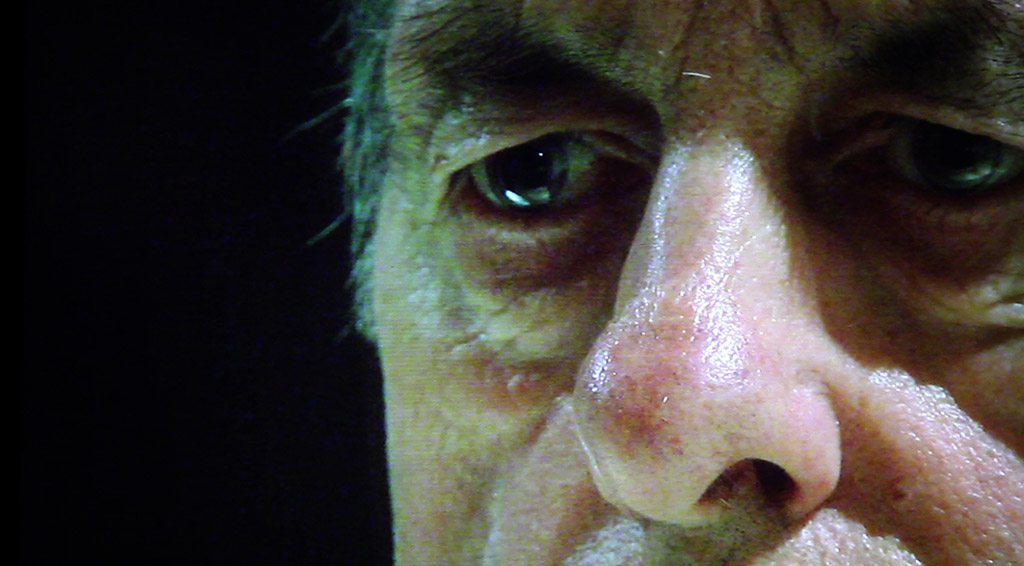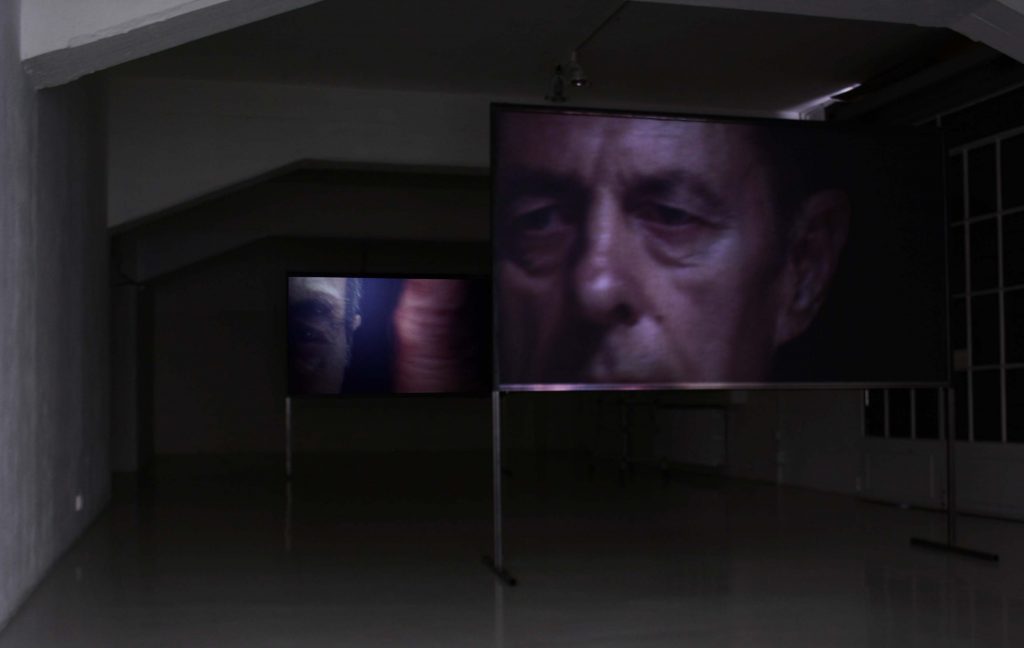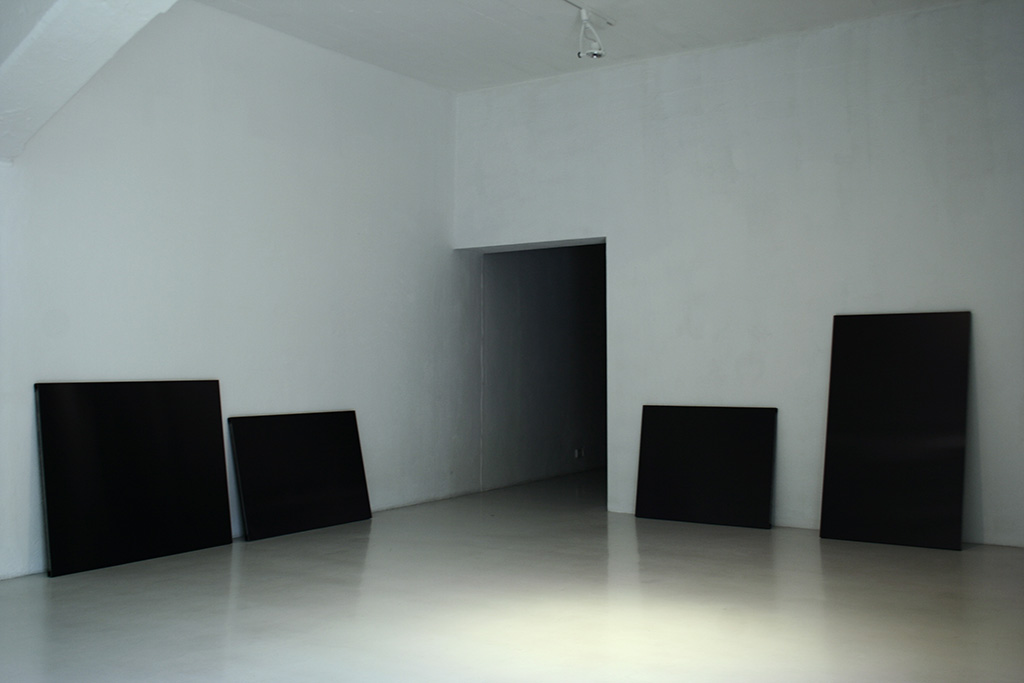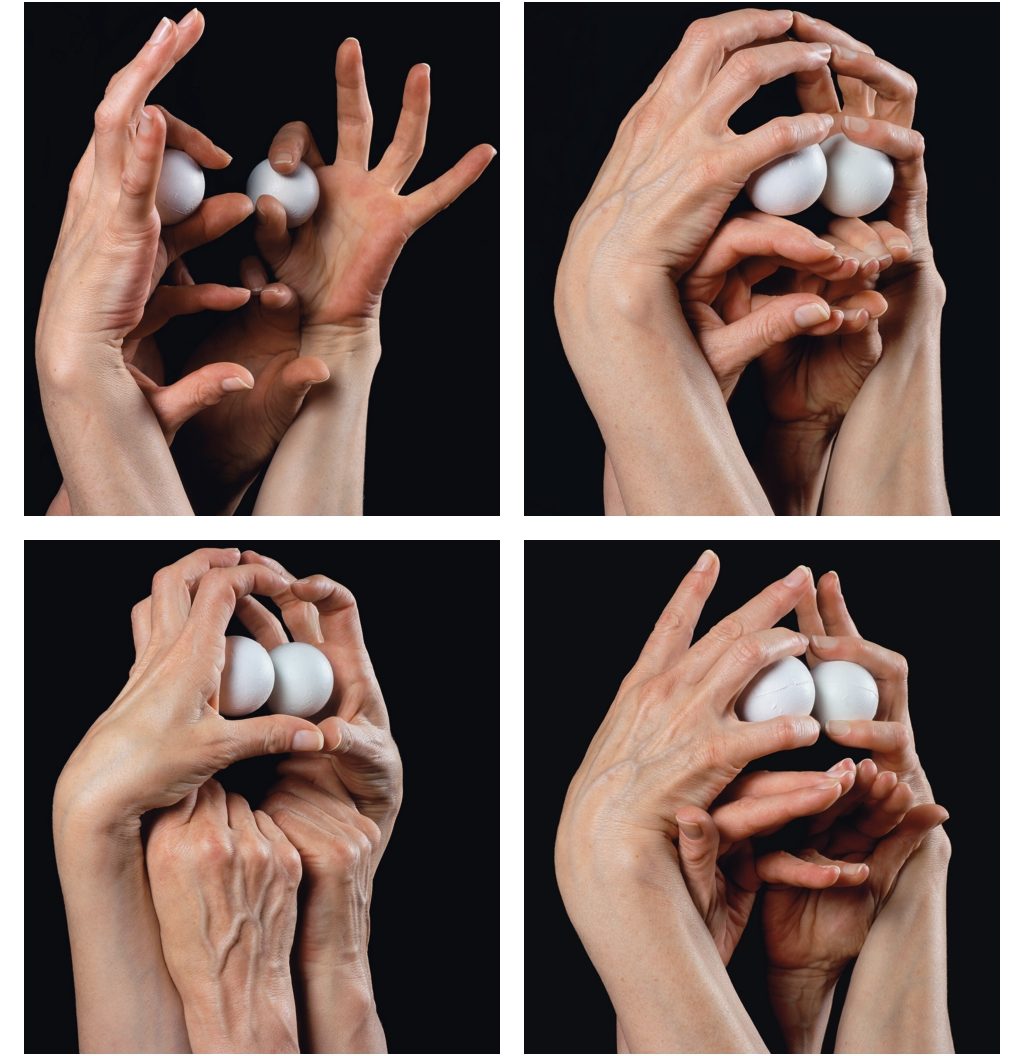HELEN DOWLING
Offon

Helen Dowling, Untitled John, 2010 – Video HD 16:9 double channel, 4.38 Minutes
.
OPENING: Saturday, 12 March 2011 – h 18.00
15 March 2011 – 30 April 2011
.
This show is comprised of a video installation ‘untitled John’ and a series of photographic sculptures ‘supporting photographs’.
In trying to find out what I wanted to communicate in this short piece of writing I sought out the connection and interest I had in wanting to show these two pieces together. Whilst it is simpler to describe the pieces individually, it is the relationship between them that hints at the impulse to show the work as a whole.
As is true of all encounters, there are many things that influence and alter the experience of an artwork – from the space it occupies to our thoughts as we approach the work. Looking back at the memories of these encounters, we connect into the experience what we feel is relevant to the artwork but perhaps the work should also be considered when it is not there.
When watching a video work the piece is turned on . It is being experienced. When it is off, perhaps preparing to loop again, we are maybe engaging with the ‘blank’ space whilst we wait. The space is perhaps being noticed but through the frame of an imminent arrival of image. Off seems equally as important for the medium of video as on does. Both off and on are present states, existing at the same time to varying degrees. When we are left with a blank screen we are mindful that the video will be coming and when the video is on we are aware that it could change to off when the piece ends. In the video today there are blank frames within the structure of the work as well as when it ends to loop back upon itself. It shows two projection screens standing opposite each other. The footage is made up of small clips or fragments of intimate close ups of an older man’s face, shoulder, hand or arm. As we watch the protagonist of the video, a number of interruptions come in to play. The once steady man shakes or moves, the filming of the camera suddenly jumps or falls out of focus or a third “accident” of manipulation in the editing makes a few frames repeat over and over like a technological glitch.
Just as we feel we are about to grasp something of his character the image shifts and shakes in a blend of mistakes made both during and after filming. Sometimes in synchronization with the video, the soundtrack of broken and hissing music seems to start on recognisable melodies but breaks away again before developing into a tune. Yet despite these interruptions it is not a piece that stops and starts but rather the mistakes and glitches become its central choreographic force.
The man that had been filmed in our physical world is now projected and lost here, in and out of focus, within and escaping the frame. He exists in this video but differently, precisely because he is now in the durational medium of video. The protagonist is both there and gone. There is a slipperiness to the moving image because it cannot stay there, where we see it. It will at some point disappear, leaving no mark on the surface on which it has just been experienced.
In turn, ‘supporting photographs’ are a series of frames mounted with images taken from projection fabric. The material of the objects are akin to the materials used to make the screens of the video installation. They refer to the screen but do not have the same properties. Instead of being objects that ‘host’ the artwork they have become it. The image and body of the screens are changed into objects that will always be on but also always refer to off.

Helen Dowling, Installation view “Offon”, 2011
_______________________________________________________________________________________
BIO
Helen Dowling (b. 1982, UK) works with a multidisciplinary practice that has the ability to transfer empathy and emotions within the video medium. Rather than working with stories, her videos, her photos and objects juxtapose basic elements such as rhythm, color and sound, drawing viewers into a sequence of sensations that relate and build upon each other. . She graduated from Goldsmiths College in London, obtained her master’s degree from the Slade School of Fine Art in London and won 2 years of residency at the Rijksakademie van beeldende kunsten. His recent exhibitions include ‘Flesh of the World’, University of Toronto, ‘VISIO’, Villa Romana, ‘Euritmie’, The Castelvecchio Museum, Verona, ‘Open Studios’ Viafarini Artists in Residence, Milan, ‘Disabled by Normality’, DOX Center for Contemporary Art, Prague and “the immobile event”, Casa Masaccio, Tuscany. Future 2015 performances include a person at Kazachenko’s Appartment, Oslo and M4, Amsterdam. With her own research project, which investigates the possibilities of rhythmic entrainment in the context of moving images, she has been awarded a grant from the Mondriaan Foundation. During the summer she will be in residence at the M4gastatelier, Amsterdam.
_______________________________________________________________________________________

Helen Dowling, Supporting photographs (2 Large and 2 Small), 2011

Helen Dowling, Crinkum-Crankum (1,2,3,4), 2006 – Stampa Lambda, 33 x 39 inch (each)